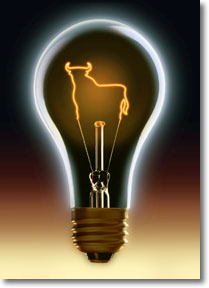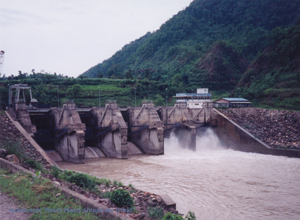Growth of Power Sector
Growth of Power Sector infrastructure in India since its Independence has been noteworthy making India the third largest producer of electricity in Asia. Generating capacity has grown manifold from 1,362 MW in 1947 to 113,506 MW (as on 30.09.2004). The over all generation in India has increased from 301 Billion Units (BUs) during 1992- 93 to 558.1 BUs in 2003- 04.
In its quest for increasing availability of electricity, India has adopted a blend of thermal, hydel and nuclear sources. Out of these, coal based thermal power plants and in some regions, hydro power plants have been the mainstay of electricity generation. Oil, natural gas and nuclear power accounts for a smaller proportion. Of late, emphasis is also being laid on non-conventional energy sources i.e. solar, wind and tidal.

All India Fuelwise Generating Installed Capacity (as on
September 30, 2004)
| INSTALLED CAPACITY GROWTH (MW) | ||||
| Year | Thermal | Hydro | Nuclear | Total |
| March 1992 | 48,086 | 19,194 | 1,785 | 69,065 |
| March 1993 | 50,749 | 19,576 | 2,005 | 72,330 |
| March 1994 | 54,369 | 20,379 | 2,005 | 76,753 |
| March 1995 | 58,113 | 20,833 | 2,225 | 81,171 |
| March 1996 | 60,083 | 20,986 | 2,225 | 83,294 |
| March 1997 | 61,877 | 21,642 | 2,225 | 85,744 |
Electricity Consumption
The elasticity ratio (elasticity of electricity consumption with respect to GDP) was 3.06 in the first Plan and peaked at 5.11 during third plan and declined to 1.65 in the Eighties. While consumption went up by 3.14% for every 1% growth in GDP in the first five-year plan period (1951- 56), it went up by only 0.97% in the eighth plan period (1992- 97).
The growth in electricity consumption over the past decade has been slower than the GDP’s growth. This could be due to high growth of the services sector or it could reflect improving efficiency of electricity use. Moreover, captive generation – which isn’t captured by these numbers — has also increased. However, as growth in the manufacturing sector picks up, the demand for power is also expected to increase at a faster rate. Demand will also increase along with electrification. In order to support a rate of growth of GDP of around 7% per annum, the rate of growth of power supply needs to be over 10% annually.
Per Capita Consumption of Electricity
Per capita consumption of electricity is expected to rise to over 1000 kilowatt hours per annum (kwh/ annum) in next 10 years (from present level of 580 kwh). Compare this against over 10,000 kwh/ annum in the developed countries!



